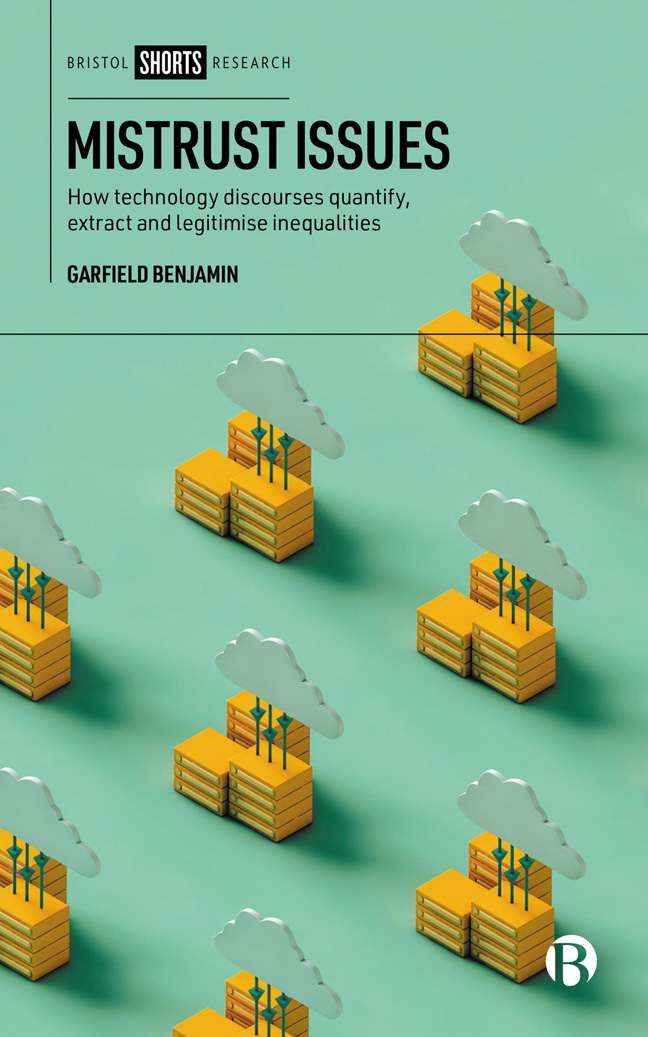Book contents
- Frontmatter
- Dedication
- Contents
- About the Author
- Acknowledgements
- One Introduction: Trust Issues
- Two Trustification: Extracting Legitimacy
- Three State: Measuring Authority
- Four Corporate: Managing Risk
- Five Research: Setting Terms
- Six Media: Telling Stories
- Seven Case Study: COVID-19 Tracing Apps
- Eight Case Study: Tech for Good
- Nine Case Study: Trusting Faces
- Ten Conclusion: False Trade-Offs
- References
- Index
Eight - Case Study: Tech for Good
Published online by Cambridge University Press: 24 January 2024
- Frontmatter
- Dedication
- Contents
- About the Author
- Acknowledgements
- One Introduction: Trust Issues
- Two Trustification: Extracting Legitimacy
- Three State: Measuring Authority
- Four Corporate: Managing Risk
- Five Research: Setting Terms
- Six Media: Telling Stories
- Seven Case Study: COVID-19 Tracing Apps
- Eight Case Study: Tech for Good
- Nine Case Study: Trusting Faces
- Ten Conclusion: False Trade-Offs
- References
- Index
Summary
Trustification operates when populations or groups are forced to perform the conditions of trust without corresponding relations of trust. The power asymmetry between those extracting trust to legitimize technology development and deployment, and those expected to trust them, creates and entrenches structural inequalities. This occurs even within initiatives that claim to be creating technologies ‘for good’.
These programmes – data for good, AI for good, tech for good – seem to be everywhere, connecting corporate, state, research and public sector organizations, agendas and interests. But we must ask what good? And whose good? The interests of those on whom these systems operate are often left out of the decision-making process, sidelined in the discourses that determine but rarely define this elusive ‘good’. And tech ‘for good’, especially humanitarian tech, is used to extract legitimacy for tech ‘for no good’, furthering capitalist and/or state aims of escalating and consolidating power and wealth.
The discursive project of tech for good performs many of the dominant (and harmful) assumptions that surround the use and role of technology in society. The quantification of social issues, and the datafication of those affected by them, feeds into the expansion of technological solutionism and the extraction of legitimacy for those solutions. Involvement in humanitarian projects therefore acts as marketing for tech companies, what has been labelled as ‘aidwashing’ (Martin, 2023) in the embedding of surveillance systems to control the distribution of aid, or #Help (Johns, 2023) in the policy influencing practices of translating populations to data, embedding the interface as a mode of control in ways that echo the dashboard of sensory power (Isin and Ruppert, 2020). This is all framed in the prevailing narratives that label tech as neutral, tech companies as benevolent, and their solutions as objective.
Around technologies such as AI, the assumption that it ‘is neutral and should be used “for the greater good” […] neutralises criticism as simply a matter of imperfect information.’ (Jansen and Cath, 2021: 189). These ‘completionist’ desires become embedded in sociotechnical systems. The framing assumes that tech for good is a universally viable approach and aim, and that any given technological solution can be applied to any context with enough data and infrastructure.
- Type
- Chapter
- Information
- Mistrust IssuesHow Technology Discourses Quantify, Extract and Legitimize Inequalities, pp. 119 - 129Publisher: Bristol University PressPrint publication year: 2023



